Magazine
Financing Futures Nell Merlino
Editorial Team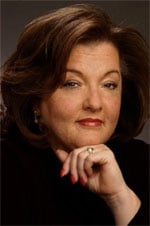
Nell Merlino knows that while aspiring female entrepreneurs often have a host of innovative ideas, there is almost always one major obstacle blocking their path to success – Money. That’s why in 1999 she co-founded Count-Me-In for Women’s Economic Independence, an online service that provides women with access to business loans, consultation, and education. The organization makes business loans between $500 and $10,000 available to women across the country who often have a harder time accessing financing than male business owners. It has given approximately 700 business loans to about a quarter of the people who have applied.
The loans are funded by donations raised through the private and corporate sectors, as well as Invest in Women Notes from the Calvert Foundation, a socially responsible institution that supports community development organizations.
Merlino, 52, now has taken matters a step further with the formation of Make Mine a $Million, a new part of the Count-Me-In program. Only six percent of women-owned businesses have revenues of a million dollars or more, and her goal is to show women with micro-businesses the path to getting to the million- dollar mark. Women who have been in business at least two years with at least $250,000 in revenue, with “real evidence and opportunity to get to one million dollars,” are encouraged to apply for a loan, says Merlino.
Seven women who were accepted into the Make Mine a $Million program started with financing from Count-Me-In, which demonstrates that even a small amount of money to get started can go a long way. Whether it is $3,000 for equipment or other needs, Merlino says, “We loan the money because when you are borrowing, you are expanding.”
When considering an applicant for a loan in the Count-Me-In program, the premise of the business, the applicant’s experience with the product or service she is offering, credit rating, and the presence of any family members who run their own businesses are all taken into account.
While Merlino believes “all business owners are creative,” their chances of success are heavily weighted in the application process. She recounts a woman who had an innovative proposal for an upscale line of dog biscuits but lived in an area that did not have the upscale clientele to support her product.
The Count-Me-In website count-me-in.org is a valuable resource for women looking to start their own businesses, with features ranging from a starter checklist to the “Biz Line” where users can e-mail questions and receive responses from Merlino’s team within 48 hours.
Thirteen years after conceiving and producing the Take Our Daughters to Work Day initiative for the Ms. Foundation in 1993, Merlino’s passion for empowering women to succeed in their work is still unwavering.
“Women must have confidence in their vision,’’ Merlino says. “That is the whole idea of business.”
Building a Museum Working Women Can Call Their Own: Katherine Honey
Editorial Team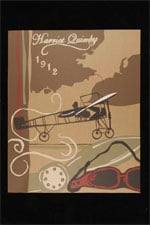
Intrigued by the notion that many women do well in math and science in high school yet do not pursue those fields in college, Katherine Honey did some digging.
The unsettling discovery of photos only depicting career women listening and serving led Honey, 61, to do something big about changing the continued stereotypes of women in the workplace. She created the Women at Work Museum in Attleboro, Massachusetts, which honors the achievements of women and provides educational programs that promote leadership, economic independence, and careers in math, science, engineering, and technology.
“Men and women have the same stereotypical attitudes about women and their abilities, and that comes from our experiences and common culture,” says Honey, who has been president of the museum since it opened in 2003. “Part of the goal of the museum is to break down differences.” In just two years, five major exhibits and 35 events showcasing women’s accomplishments have been hosted at the museum supporting that vision.
Open on Saturdays only, more than three thousand individuals have visited the museum to date. With the launch of the museum’s website womenatworkmuseum.org, and the presentation of engaging events such as the Clara Barton Thank You Tea, the Dream it! Design it! program, and the opening of the Women in Transport exhibit, Honey anticipates that visitors will exceed five thousand this year.
“My contribution to the success of the museum is directly related to my ability to communicate, collaborate, plan, manage, market, develop educational programs, match projects with qualified volunteers, foster collaborative relationships, and to use electronic devices and systems,” says Honey, whose biggest challenge is pacing herself and the museum’s growth over the next five years. “These skills have been developed over the past forty years in my work as a classroom teacher, business owner, and community activist.”
Currently on tap is a major fundraising initiative. “The goal of the capital campaign is to raise $250,000 now, with a total of three million dollars raised by the end of 2008,” says Honey. Funds will be used to create a library, an exhibit space, an area for business meetings and educational programs, and a performance and conference center with seating for 450 people. Given the museum’s mission, the center will boast the latest technology, including video conferencing to support mentoring efforts for school-age students, communication with organizations around the world for museum partnerships, and the development of expertise in math, science, engineering, and technology for a multicultural audience of all ages.
“I am working to ensure that the museum will have a variety of revenue sources including grants, fundraising events, personal and organizational development programs, and original products with limited availability,” says Honey. The museum’s first product is a note card that incorporates an original paper illustration created for the “Women Who Fly” exhibit by Jennifer DeDonato.
“People are very excited about what we have accomplished and want to help increase the museum’s visibility and initiate fundraising efforts,” says Honey. “We are ready to move this incredible institution to a world wide arena.”
Engineering Success At Every Level: Melissa Charles
Editorial Team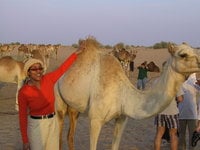
While conducting an interview, an applicant asked me how long I had been with the company. My response—13 1/2 years—actually took me by surprise. When I started in 1992 as a summer intern, I was not thinking of a long-term career. Yet at a time when most of my friends are with their third or fourth company since graduation, I still enjoy working for the same company.
Through name changes (Hughes Aircraft Company, Hughes Space and Communication, Boeing Satellite Systems, Boeing Electron Dynamic Devices, L-3 Communications Electron Technologies Incorporated), different locations (El Segundo, Calif., Dubai, United Arab Emirates, Torrance, Calif.), and varied assignments (from member of the technical staff to engineering manager with many stops in between), my responsibility is to ensure that all hardware delivered is the highest quality and meets the customers’ unique specifications. These are essential for providing clear, uninterrupted modes of communication via satellite television, telephone, pagers and radio.
Early in my career, I sought guidance from multi-level employees (both technical and non-technical). I used advice from the company president (focus on the company’s goals and objectives), human resource/diversity manager (focus on the employee), engineers (focus on good design and hardware performance), and inspectors (focus on quality) to become one of the youngest managers in the company’s history. At twenty-five, I was responsible for over two million dollars a year and supervised twenty-two engineers and technicians. Several other management positions followed with more customer interface and increased financial responsibility. In my last assignment as the Deputy Director, I supported an organization of almost one hundred people with an annual budget of over $22 million dollars.
One of my most challenging positions was as an Integrated Product Team Lead in the Middle East. I spent eleven months in Dubai, United Arab Emirates working with my husband and a team of engineers to set up a ground station for a mobile telephone satellite system. I was responsible for installing and upgrading software, troubleshooting the system, validating the user manual, tracking and correcting any problems and training the customer on proper usage. Amidst a culture where women do not typically work and are not regarded as technically savvy, I was able to gain the trust and respect of the customer. The telephone terminals used by the troops in the Middle East today are a result of this successful project.
Mentoring
I provide guidance to other women (and some men) trying to find ways to balance work and home life. As a mother of two children ages four and one, I know how hectic things can be when both parents work. I suggest ways for employees to approach their supervisors with modified schedules, effective ways of maximizing their time at work, and options for working some unclassified projects from home (i.e. document review, schedule updates). Although I am not a benefits administrator, I also tell them about different programs available for extended family leave, returning from maternity leave, daycare searches, and preparing for life as a new working parent. These are critical to retaining employees and minimizing daily stress.
The Company Today
L-3 ETI is a very successful small company—not an enormous, bureaucratic corporation—where everyone’s contribution is valuable and recognized. This sentiment is expressed by the company’s president, Kevin Mallon, and felt by the employees, including me, “Everyone who works here can make a difference and has an impact on our success.” Everyone is encouraged to speak up and address issues all the way up the chain of command. Not many people in the workplace have this opportunity.
L-3 ETI offers the opportunity to work on many different tasks—working with the technicians on the floor, visiting vendors/customers, performing design and analytical work, presenting technical information to customers, handling compliance issues—based on expertise and interest. The company employs talented women at every level and has a commitment to offering part-time and flexible work schedules.
Electrical engineers, mechanical engineers (designers and analysts) and program managers are highly encouraged to inquire about joining our team.
Charles is the Engineering Manager for Passive Microwave Devices at L-3 Electron Technologies.
Tinkering Her Way to the Top: A Boeing Engineer Sees Her Career Soar
Editorial Team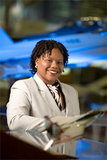
Curious to see how the family VCR worked, eight-year-old Tyria Riley took it apart, saw what she needed to see, and adroitly reassembled its many parts. When all was said and done it worked just fine. So no one was too surprised that by junior high she was ready to make her career plans known. Riley would become an electrical engineer.
Riley grew up in Illinois, in East Saint Louis, and selected the University of Southern Illinois at Edwardsville to pursue her degree in electrical engineering. This course of study is extremely difficult, but with the help of her family, she was encouraged to push on, and graduated in 2002, looking forward to what lay ahead.
Today, she is an electrical engineer in the St. Louis facilities of the largest technology company in the world— The Boeing Company. Her primary responsibility is to design and test wiring systems that are being altered or upgraded in sophisticated FA/18 fighter aircraft. She is the only engineer within her group of information technology experts who still maintains a computer-aided electrical wiring design system. So once again, she finds herself taking things apart and putting them back together.
Boeing employs more than 153,000 people in more than sixty-seven countries, representing one of the most diverse, talented and innovative workforces anywhere. More than 83,800 of their employees hold degrees—including 28,900 advanced degrees—in virtually every business and technical field from more than 2,800 colleges and universities worldwide. Riley is thrilled to be part of this global team. “The company is huge, so there are so many opportunities,” she says. “I love the diversity, and the fact that management is so supportive of my professional development.”
Constantly eager for knowledge, Riley has taken full advantage of the Boeing Learning Together Program. It pays tuition and books for any employee’s further education in any field. By December, she’ll have a master’s degree in systems engineering from the University of Missouri at Rolla. Once she completes that, she plans to go for her doctorate in systems science and mathematics at Washington University in St. Louis. Riley is also active in the National Society of Black Engineers, and serves as the organization’s regional Alumni Extension chair.
Because of her amazing attitude and drive, Riley was recently promoted, and she is looking forward to all the opportunities that The Boeing Company will continue to offer her.
Pushing Engineering and XWorx to Fly Higher: Elaine Vaught
Editorial Team
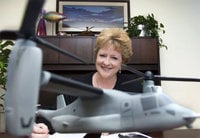
People talk about having a five-year plan and a roadmap for their careers. I never had one. I was teaching Pascal (a now-ancient computer language) for the Women in Science program at University of Texas at Arlington. Someone at Bell asked me if I was interested in a job. I couldn’t tell one helicopter from the next, but I was immediately hooked. There’s a sex appeal about anything that can fly.
Helicopters defy the natural laws of science by beating the air into submission. Technically it’s challenging. It’s executing in the art of the near-impossible. We’re responsible for the processes that design, build, and support all our aircraft and products, as well as a technology roadmap and a long-term research and development strategy. Any time we meet a commitment to a customer, that’s satisfying. When we hit a milestone or solve a huge problem—for example, no one ever flew a tiltrotor vehicle before at the speeds that we have recently done it—that’s pretty heady.
From a technical viewpoint, the most exciting experience I had was testing equipment at an Army base airport at midnight before troops flew off to the Persian Gulf. We do important work. We do things that make this world better. We saved 54,000 people after the earthquake in Pakistan. We saved countless people after Hurricane Katrina. We’re on the cusp of a huge growth opportunity for both commercial and military development. I’m excited about re-energizing and mobilizing my team toward more of a focus on innovation and solutions for products and solving some process issues. I’m absolutely pumped up for it. Our Engineering and XworX folks are naturals for the Textron Six Sigma tool set—we have a number of black belts and green belts so there’s a lot of energy around that. We’re defining roles and tightening the processes, which gives people added enthusiasm moving forward.
I’m in the office twelve to fourteen hours a day. Eight of those are spent in meetings helping solve different problems—technical problems and career problems. During those other hours I’m committed to connecting with people to make sure obstacles and perceived obstacles are removed so they can do their jobs. I don’t feel satisfied unless I connect with people in a personal way. I think about that every day on my way home. “Did I help someone do a better job today?”
If I were to have a legacy it would be to help a group or a person take a step forward. My vision is to focus on the building blocks that will feed our aircraft much faster, investing in new technologies, leaning our processes, and getting minds around reducing development cycles in a quantum way. Twenty years ago no one thought we could put a tiltrotor aircraft in the air. It’s putting things in the air in ten or twenty years that we’re passionate about today that people don’t think is possible. When I speak to women’s groups, I encourage women who want to do something meaningful and make money to consider careers in engineering, whether in telecoms, dotcoms, or even aerospace. It’s a very challenging career but enormously rewarding. It’s not easy for women to break the glass ceiling, so I hope the work I’ve done will make it easier for my daughters to find meaningful work and get paid for it. My advice is be open to possibilities, keep a sense of humor, and always take the high road.
About the author:
Elaine Vaught was named Senior Vice President of Engineering and XworX in April 2006. She joined Bell in 1985 as an avionics software programmer and has spent the last twenty-one years working in all aspects of the rotorcraft industry.
Women Who Inspire Us
Editorial TeamPushing Engineering and XWorx to Fly Higher: Elaine Vaught
Elaine Vaught was named Senior Vice President of Engineering and XworX in April 2006. Vaught writes, “People talk about having a five-year plan and a roadmap for their careers. I never had one…I don’t feel satisfied unless I connect with people in a personal way. I think about that every day on my way home. Did I help someone do a better job today?”
Tinkering Her Way to the Top: A Boeing Engineer Sees Her Career Soar
Curious to see how the family VCR worked, eight-year-old Tyria Riley took it apart, saw what she needed to see, and adroitly reassembled its many parts. Today, she is an electrical engineer in the St. Louis facilities of the largest technology company in the world—The Boeing Company.
Engineering Success At Every Level: Melissa Charles
Through multiple name changes, different locations and varied assignments, Melissa Charles has worked at L-3 for 13 and a half years. She provides guidance to other women (and some men) trying to find ways to balance work and home life. Suggesting ways for employees to approach their supervisors with modified schedules, effective ways of maximizing their time at work, and options for working some unclassified projects from home.
Building a Museum Working Women Can Call Their Own: Katherine Honey
Intrigued by the notion that many women do well in math and science in high school, yet do not pursue those fields in college, Katherine Honey did some digging. She created the Women at Work Museum in Attleboro, Mass., which honors the achievements of women and provides educational programs that promote leadership, economic independence, and careers in math, science, engineering, and technology.
Financing Futures Nell Merlino
Nell Merlino knows that while aspiring female entrepreneurs often have a host of innovative ideas, there is almost always one major obstacle blocking their path to success—Money.
Opening the World’s Eyes: Katherine Chon
While scanning an article detailing the plight of a group of South Korean girls who had been forced into prostitution at a massage parlor near her hometown, Katherine Chon couldn’t help but be struck by a sobering realization. She could have been one of those girls. Chon formed the non-profit Polaris Project, an organization that provides emergency shelter and comprehensive case management to victims of trafficking.
Break Bread, Strengthen Bonds: Sarah Moulton
Moulton is executive chef at Gourmet magazine, host of Sara’s Secret’s on the Food Network seven days a week, a frequent guest on ABC’s Good Morning America, and the author of several cookbooks, the newest of which, Sara’s Secrets for Weeknight Meals, debuted in October 2005. When Moulton became a mom, she wanted comfort foods to create a warm and soothing atmosphere. She sees preparing meals as a distinct form of caring.
Volunteer With Style: Nancy Lubin and Dress For Success
Nancy Lubin exemplifies how vision and talent can be used to transform the lives of others. In 1996, she founded Dress for Success, using $5,000 that was left to her by her great-grandfather, Poppy Max, who had come to the United States from Eastern Europe to forge a new life. Armed with her experience as a law student, Lubin established the organization “to help low-income women take charge of their lives.”
Making Museums Cool: Edwina Meyers and Gail Velez
Meyers and Velez started Cool Culture, a non-profit program that connects low-income families from diverse backgrounds with more than forty museums, zoos, and botanical gardens in New York by educating them on why it’s hip, fun, and smart to take advantage of all that the city has to offer.
JJ Ramberg: Searching For Charitable Success
In 2005, journalist JJ Ramberg, who reports on business for MSNBC, partnered with her brother Ken, a dot com entrepreneur, to launch GoodSearch.com , a Yahoo-powered search engine that donates half of its revenue to the charities and schools its users designate.
Amy Scott: Friendly Mentor
Amy Scott appreciates the value of women helping women and she exudes a unique blend of friendship and mentoring in the workplace every single day. As a managing partner at New York Life—one of the youngest people to be promoted to this top title—she supervises three partners and more than 70 agents while juggling her own family of three young children. Her colleagues say she’s a role model who inspires women to recognize that it is indeed possible to lead a balanced life and to be successful as well as compassionate.
Pamela Nicholson: Loyal Leader
You hear the stories all the time, from the mail room to the board room . They started as the intern and now they run the company. Enter Pamela Nicholson.
Linda Hall: Wise Winner
At 63, this Salt Lake City computer programmer knew she didn’t fit the profile of a traditional techie. Thirty years into her career, Hall received the worst possible news for a mature worker in the technology sector: She was being laid off. Four months after the layoff that turned her world upside down, Hall received an offer from one of the largest banks in the city as a programmer with regular nine to five hours and a $15,000 increase over her previous position.
Raising a Champion and Battling a Bully: Linda Armstrong
Linda Armstrong’s fight against an uphill battle in life while raising a future athletic superstar is the subject of her book, No Mountain High Enough – Raising Lance, Raising Me. “I always had a hope and dream that I could rise above it,” she says about the troubles in her life.
Racing to the Top: Beverly Kearney
When she was one of only two survivors out of five bodies pulled from the twisted metal of a car wreck in 2002, Beverly Kearney found herself having to rapidly embody the lessons she imparted to the athletes on her juggernaut track team at the University of Texas.
Refusing to be a Victim: Cindi Broaddus
She had already endured the deaths of her parents in a four-year span, a failed marriage, and the challenge of raising her three daughters as a single parent, but apparently all that hardship for Cindi Broaddus was preparation for the harrowing night of June 5, 2001.
An Astronaut and an Anchor: Mae Jemison and Linda Lorelle
Dr. Mae Jemison blasted into orbit aboard the space shuttle Endeavour in 1992, becoming the first African American woman in space. Linda Lorelle is an Emmy Award-winning anchor in Houston whose reports have not only touched lives but saved them.
